Schall, D.L., Wolf, M. and Mohnen, A. (2016) “Do effects of theoretical training and rewards for energy-efficient behavior persist over time and interact? A natural field experiment on eco-driving in a company fleet,” Energy Policy, 97, pp. 291–300. Available at: https://doi.org/10.1016/j.enpol.2016.07.008
https://doi.org/10.1016/j.enpol.2016.07.008
Allison, C.K. and Stanton, N.A. (2018) “Eco-driving: The role of feedback in reducing emissions from everyday driving behaviours,” Theoretical Issues in Ergonomics Science, 20(2), pp. 85–104. Available at: https://doi.org/10.1080/1463922x.2018.1484967
Madlen Günther, Celina Kacperski, Josef F. Krems, Can electric vehicle drivers be persuaded to eco-drive? A field study of feedback, gamification and financial rewards in Germany,Energy Research & Social Science
Neumann, I. et al. (2015) “Eco‐Driving Strategies in battery electric vehicle use – how do drivers adapt over time?,” IET Intelligent Transport Systems, 9(7), pp. 746–753. Available at: https://doi.org/10.1049/iet-its.2014.0221
Günther, M., Rauh, N. and Krems, J.F. (2017) “Conducting a study to investigate eco-driving strategies with battery electric vehicles – a multiple method approach,” Transportation Research Procedia, 25, pp. 2242–2256. Available at: https://doi.org/10.1016/j.trpro.2017.05.431
Neumann, I. et al. (2015) “Eco‐Driving Strategies in battery electric vehicle use – how do drivers adapt over time?,” IET Intelligent Transport Systems, 9(7), pp. 746–753. Available at: https://doi.org/10.1049/iet-its.2014.0221
Savkovic et al. (2019) “Effects of eco-driving training: A pilot program in Belgrade Public Transport” Tehnicki vjesnik - Technical Gazette, 26(4). Available at: https://doi.org/10.17559/tv-20180704091922
Zavalko, A. (2018) “Applying energy approach in the evaluation of eco-driving skill and eco-driving training of truck drivers,” Transportation Research Part D: Transport and Environment, 62, pp. 672–684. Available at: https://doi.org/10.1016/j.trd.2018.01.023
Azzi, S., Reymond, G., Mérienne, F., and Kemeny, A. (September 13, 2011). "Eco-Driving Performance Assessment With in-Car Visual and Haptic Feedback Assistance." ASME. J. Comput. Inf. Sci. Eng. December 2011; 11(4): 041005. https://doi.org/10.1115/1.3622753
Barth, M. and Boriboonsomsin, K. (2009) Energy and emissions impacts of a freeway-based dynamic eco-driving system, Transportation Research Part D: Transport and Environment. Pergamon. Available at: https://www.sciencedirect.com/science/article/pii/S1361920909000121 (Accessed: October, 2022).
Lauper, E. et al. (2015) “Psychological predictors of eco-driving: A longitudinal study,” Transportation Research Part F: Traffic Psychology and Behaviour, 33, pp. 27–37. Available at: https://doi.org/10.1016/j.trf.2015.06.005
Kirsten Thommes foc et al. (2019) Nudging professional drivers to improve performance and reduce fuel consumption, LSE Business Review. Available at: https://blogs.lse.ac.uk/businessreview/2019/10/29/nudging-professional-drivers-to-improve-performance-and-reduce-fuel-consumption/ (Accessed: October 21, 2022).
Rouzikhah, H., King, M. and Rakotonirainy, A. (2013) “Examining the effects of an eco-driving message on driver distraction,” Accident Analysis & Prevention, 50, pp. 975–983. Available at: https://doi.org/10.1016/j.aap.2012.07.024
Kircher, K., Fors, C. and Ahlstrom, C. (2014) “Continuous versus intermittent presentation of visual eco-driving advice,” Transportation Research Part F: Traffic Psychology and Behaviour, 24, pp. 27–38. Available at: https://doi.org/10.1016/j.trf.2014.02.007
Xu, N. et al. (2021) “An overview of eco-driving theory, Capability Evaluation, and training applications,” Sensors, 21(19), p. 6547. Available at: https://doi.org/10.3390/s21196547
Brand, C., Anable, J. & Morton, C. (2019) Lifestyle, efficiency and limits: modelling transport energy and emissions using a socio-technical approach. Energy Efficiency 12, 187–207. https://doi.org/10.1007/s12053-018-9678-9
ERTICO (2016) “ITS4CV” – ITS for Commercial Vehicles Study of the scope of Intelligent Transport Systems for reducing CO2 emissions and increasing safety of heavy goods vehicles, buses and coaches. Available at https://erticonetwork.com/wp-content/uploads/2016/09/ITS4CV-Report-final-2016-09-09.pdf
Pineda L, Xie Y (2021) Truck Eco-driving Programs: Current Status in Latin America and International Best Practices Available at https://theicct.org/sites/default/files/publications/eco-driving-latam-EN-apr2021.pdf
Kanok Boriboonsomsin (2015) Reducing the Carbon Footprint of Freight Movement through Eco-Driving Programs for Heavy-Duty Trucks June 2015 A White Paper from the National Center for Sustainable Transportation
Schall, D.L., et al.,(2016) Do effects of theoretical training and rewards for energy-efficient behavior persist over timeand interact? A natural field experiment on eco-driving in a company fleet. Energy Policy http://dx.doi.org/10.1016/j.enpol.2016.07.008iEnergy Policy 97 (2016) 291–300
Lightfoot https://www.lightfoot.co.uk/ (Accessed:October 2022).
Vaezipour, A. et al. (2017) “Enhancing eco-safe driving behaviour through the use of in-vehicle human-machine interface: A qualitative study,” Transportation Research Part A: Policy and Practice, 100, pp. 247–263. Available at: https://doi.org/10.1016/j.tra.2017.04.030
Lai, W.-T. (2015) “The effects of eco-driving motivation, knowledge and reward intervention on fuel efficiency,” Transportation Research Part D: Transport and Environment, 34, pp. 155–160. Available at: https://doi.org/10.1016/j.trd.2014.10.003
Pineda L, Xie Y (2021) Truck Eco-driving Programs: Current Status in Latin America and International Best Practices Available at https://theicct.org/sites/default/files/publications/eco-driving-latam-EN-apr2021.pdf
Gödker, M., Herrmann, D. & Franke, T., (2018). User perspective on eco-driving HMIs for electric buses in local transport. In: Dachselt, R. & Weber, G. (Hrsg.), Mensch und Computer 2018 - Tagungsband. Bonn: Gesellschaft für Informatik e.V.. DOI: 10.18420/muc2018-mci-0382
Yuhan Huang, Elvin C.Y. Ng, John L. Zhou, Nic C. Surawski, Edward F.C. Chan, Guang Hong, Eco-driving technology for sustainable road transport: A review,Renewable and Sustainable Energy Reviews,Volume 93,2018,Pages 596-609,ISSN 1364-0321,https://doi.org/10.1016/j.rser.2018.05.030
The behaviour change wheel: A new method for characterising and designing behaviour change interventions - PMC (nih.gov)
Ryan, & Deci, E. L. (2020). Intrinsic and extrinsic motivation from a self-determination theory perspective: Definitions, theory, practices, and future directions. Contemporary Educational Psychology, 61, 101860–.
De Pelsmacker, P., & Janssens, W. (2007). The effect of norms, attitudes and habits on speeding behavior: Scale development and model building and estimation. Accident Analysis & Prevention, 39(1), 6-15
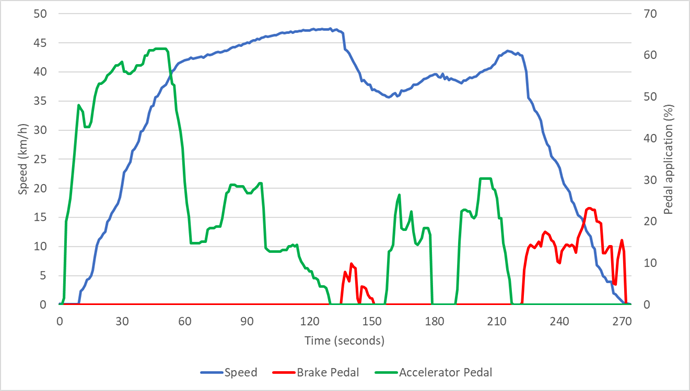
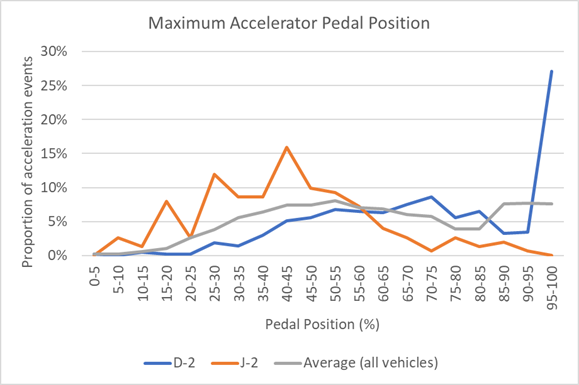
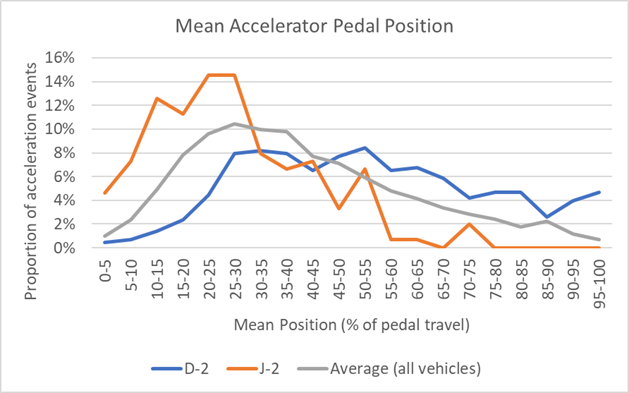



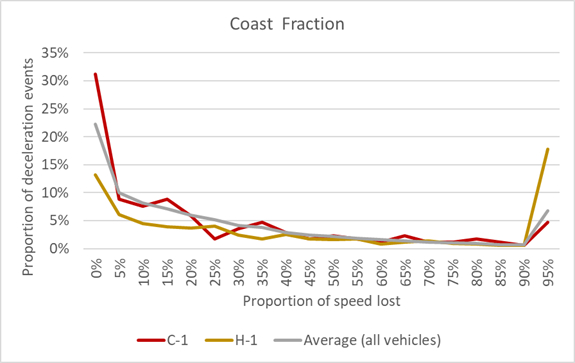
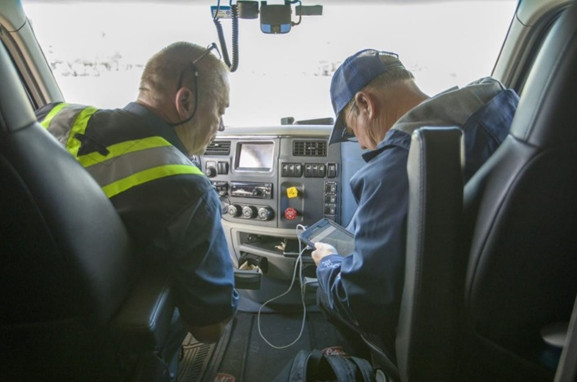

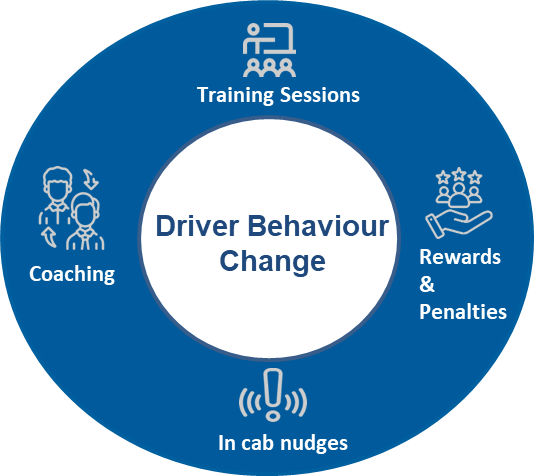
 In cab nudges for drivers can improve drivers behaviour, making them more energy efficient and effective by providing them with information on their driving style.
In cab nudges for drivers can improve drivers behaviour, making them more energy efficient and effective by providing them with information on their driving style.
 The COM-B model of behaviour described by Michie et al. attempts to represent the complex process that leads to behaviour based on three aspects: capability, opportunity, and motivation. The goal was to present behaviour model practitioners across all sectors to help develop, describe, and evaluate intervention functions. In the COM-B model, capability refers to one's ability, both physical and psychological, to undertake the behaviour. Opportunity can be classified as physical and social; motivation is the brain process that defines and directs behaviour and can be split into two categories, reflective and automotive. The components interact within the system to influence the behaviour. Therefore, an intervention can impact one or more components that affect the behavioural outcome.
The COM-B model of behaviour described by Michie et al. attempts to represent the complex process that leads to behaviour based on three aspects: capability, opportunity, and motivation. The goal was to present behaviour model practitioners across all sectors to help develop, describe, and evaluate intervention functions. In the COM-B model, capability refers to one's ability, both physical and psychological, to undertake the behaviour. Opportunity can be classified as physical and social; motivation is the brain process that defines and directs behaviour and can be split into two categories, reflective and automotive. The components interact within the system to influence the behaviour. Therefore, an intervention can impact one or more components that affect the behavioural outcome.